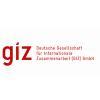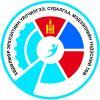
IRIM begun monitoring the transparency of government agency websites in 2011 and continued in 2014, 2015, 2016, 2017 and 2018.
E-governance simplifies the the process of delivering information and services from government to citizens. Which is why the main tool to support and enhance the relationship between government to citizens, is the government agency websites. However, due to information on government websites not being standardized or updated, and some information most needed by citizens not being published at all, the availability of information for citizens are not always accessible.
The aim of the monitoring is to measure the regulation and implementation of transparency based on the 'Law on right to Information and Transparency' and "Law on Glass Account".
This report covers transparency of 81 official websites of government agencies and their comparisons with the previous year. 5 main indicators are used to monitor the information within the website. The key principles of the indicators are measurability, feasibility and accuracy. The 5 indicators include:
1. Relevance of information
2. Reliability of information
3. Timeliness of information
4. Accessibility of information
5. Usability of information
Through the five indicators mentioned above, four categories were evaluated; Activities, human resources, budget and procurement of agencies.
The importance of this monitoring and evaluation is for government agencies to continue to improve their websites and build a trustworthy relationship with the public.
.png)

.png)

.png)
.png)
.jpg)




































